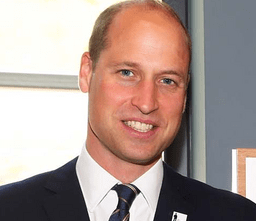Following Prince Philip’s legacy, Prince William adopts a disciplinarian approach to managing royal family tensions, including the ongoing feud with Prince Harry.
In the wake of Prince Philip, the Duke of Edinburgh’s passing in 2021, the royal family lost a formidable figure who maintained order with a no-nonsense approach. His absence has been profoundly felt, but now Prince William is stepping into his grandfather’s shoes, embracing a disciplinarian role within the royal family.
A source revealed to the Daily Beast that William, 42, is now the family’s primary disciplinarian, effectively taking charge of internal matters. “There is a sense that William has stepped into the Prince Philip role. Philip ruled the family with a rod of iron, and you saw when he died that discipline collapsed. Now William is calling the shots when it comes to family discipline,” the source explained.
Embed from Getty ImagesThis firm approach is particularly evident in William’s handling of the ongoing tensions with his younger brother, Prince Harry. Despite King Charles’ desire for more frequent contact with Harry, William has remained resolute. This stance underscores William’s growing influence and his commitment to maintaining order within the family.
The source emphasized that William’s determination reflects a broader effort to preserve the stability of the royal family during challenging times. As King Charles continues his cancer treatment and Princess Kate undergoes preventative chemotherapy, William’s leadership has become increasingly crucial.
The royal family is expected to retreat to Balmoral, Scotland, for their annual summer gathering. This year, the trip holds added significance as an opportunity for the family to regroup and support each other amidst recent hardships. Former BBC Royal correspondent Jennie Bond remarked, “It’s been one heck of a year for the Royal Family so far, and nothing would please the King more than to have his close family gathered together in the peace of Balmoral for a time to take stock together, mark the passing of an incredibly difficult few months and look to the future.”
Bond added that Princess Kate’s participation in the Balmoral trip is uncertain due to her ongoing treatment. However, if she does attend, the family is expected to provide her with unwavering support, ensuring a summer filled with love and strength for her and their children.
Analysis:
- Political: Prince William’s assertive role within the royal family mirrors traditional leadership approaches, reinforcing the monarchy’s stability during periods of internal and external scrutiny. His disciplinarian stance could influence public perception of the royal family’s unity and governance.
- Social: William’s approach reflects a shift in family dynamics, emphasizing a more structured and disciplined environment. This can resonate with audiences who view the royal family as a symbol of tradition and stability, while also sparking discussions about modern leadership within historic institutions.
- Racial: The ongoing tension between William and Harry, including their differing public roles and statements, highlights broader conversations about race and representation within the monarchy. Harry’s marriage to Meghan Markle brought issues of race and inclusivity to the forefront, and William’s leadership decisions are now scrutinized through this lens.
- Gender: William’s leadership style is influenced by traditional masculine roles of discipline and authority, which may contrast with evolving expectations of gender roles within leadership. This dynamic is further complicated by Princess Kate’s role and her current health challenges, highlighting the balancing act between public duty and personal circumstances.
Economic: The royal family’s internal stability can have economic implications, particularly in terms of public support and tourism. A cohesive and disciplined royal family may bolster confidence in the monarchy, contributing to its economic sustainability through continued public interest and engagement.
